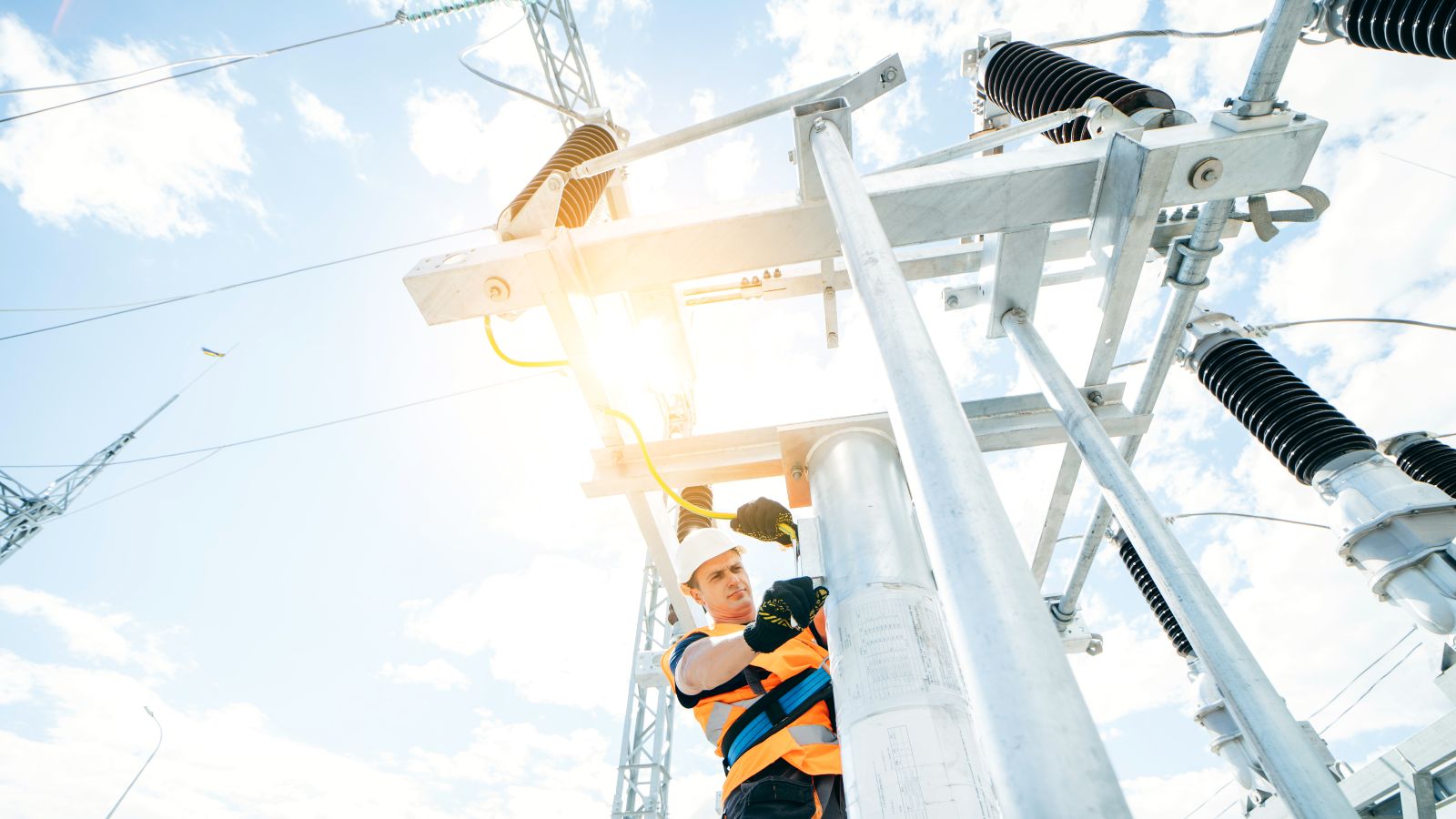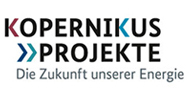ENSURE
Kopernikus project ENSURE develops the power grid of the future
The mission: getting the power grid fit for the energy transition. In its present form, it will not be able to cope with the challenges of the future. Hence, researchers, grid operators, manufacturers and civil society organisations are devising solutions in the Kopernikus project ENSURE. The modules contribute to ensuring that all will be able to access energy when they need it in the future.

A reliable power supply from renewable sources must be guaranteed even with increasing electrification in the heating and transport sectors: This belongs to ENSURE's core tasks. Basic research on this dominated the first phase of the project, planning for practical feasibility the second. In the third phase, the partners now want to test the approaches developed so far for a sustainable energy network in hybrid real-world operation. Digitalisation and automation should also help to avoid staff shortages for grid operators in the future.
Manifold challenges for energy supply
Achieving climate neutrality in Germany by 2045 is a commitment resulting from the goals of the Paris Climate Agreement. For the power supply, this means that it is to be fed exclusively from renewable energy sources in the future. This entails major challenges. Power demand is relatively constant. And yet photovoltaic and wind power plants generate energy with major volatility - winds are not always blowing, the sun is not always shining. Moreover, the current grid structure is designed to transport energy in only one direction: from power plants to consumers. However, more and more consumers now produce energy on their own. This can be done, for example, by means of solar panels on the roof or biogas plants. Their surplus could be fed into the grid - if the grid "learns" to transport in both directions.
Of relevance in this context is that grids acquire resilience. The term describes an ability to withstand disturbances and inconsistencies. This can be achieved by interlinking the nodes of the energy supply in future and enabling them to communicate with each other. Grid expansion is generally necessary. But the expense for this can be reduced if the existing grid is used more optimally. Where additional grid structures are being built, sustainable materials for the extension should be given priority. Furthermore, it is essential to distribute the costs of the energy transition equitably. All these considerations and perspectives contribute to the research work of the Kopernikus project ENSURE.
The project is developing a modular system of technologies for the energy transition that can be used flexibly - with a focus on power grids. Each of these components delivers its own added value and can be combined with others according to regional requirements. In the next step, ENSURE wants to demonstrate the interaction with real hardware components by means of simulations. Integrated energy management, which connects electricity, heat and gas grids with each other, taking into account the mobility sector as well, also has a large impact. Future energy grids have to think along with this, so that they can do more than "just" electricity.
In the third funding phase: focusing on demonstration
During the successfully completed second phase, the project has already succeeded in drafting an overall concept for energy supply. Embedded in the established socio-economic framework, this concept ensures the transferability of the results throughout Germany and Europe. Tests of power grids by using digital twins as well as in first pilot plants have been successful.
ENSURE wants to transfer its conclusions gained so far further into practice. This is to be done in a hybrid approach. That is to say, simulations and physical tests in a risk-minimised environment mutually complement each other. Benefits are lower costs and a potentially accelerated roll-out, since practical tests are immediately compatible with current legislation and regulation on this basis.
Facilities in the physical grid also contribute to the validation of models and approaches. On the one hand, ENSURE wants to review the systemic interaction of the different components. On the other hand, ENSURE aims to further develop the measures to the point that nothing hinders a nationwide application. The scientists continuously observe current technical developments and integrate them into their concepts as needed. This is reflected, for example, in the updating of scenarios.
The modules to be demonstrated in the third funding phase include:
- MVDC collector grid in net-forming operation
With the option of feeding into the transmission grid, the collector grid can provide temporary reserve and regulation power and thus function as a regenerative virtual power plant. The DC grid is to be transformed into a multi-terminal system with different voltage levels. - Virtual energy hubs
It is planned to demonstrate various use cases. This will be done in virtual hubs in different configurations as well as in RE hub gas. - Europe's largest simulation network for energy infrastructures
The integration of several research institutes' laboratories enables complex analyses for the acceleration of the energy transition. This allows the use of new hardware to be tested, for example. - Pilot plants
Some of the systems investigated so far (including pilot systems already installed) and concepts remain on the test agenda. These include the digital substation, adaptive grid protection, solid state transformers, the digital local grid, dynamic meshing and HVDC converter management.
All this facilitates analyses of complex scenarios without expensive installations in the physical network. On top of that, a Kopernikus-wide demonstration can also be implemented. ENSURE can join forces to integrate data from a power-to-X plant from P2X or an energy-flexible factory from SynErgie, for example, into the country-wide systemic observations. The ongoing electrification leads to the logical conclusion that the power grid will ultimately be the enabler of many technologies. The social and political dimensions reflected in Ariadne's studies and analyses are also included in the considerations. The real-world pilot plants, some of which are expected to be available as commercial products in little more than three years, complete the portfolio.
Optimised power grid = optimised costs
In the final phase of the project, ENSURE wants to identify ways of operating electricity grids efficiently, reliably and sustainably in the future. The concepts and components developed in the project provide for an enormous savings potential: up to 30 megatonnes of CO2 and investments in the billions.
The extrapolation assumes the connection of P2X plants, flexibilised industrial appliances according to the Ariadne scenarios and savings through efficient feed-in management of renewable energy plants. The calculations also include a reduced "redispatch". The term describes interventions in the generation capacity of power plants in order to protect line sections from overload.
In addition to reduced CO2 emissions, the reduction of redispatch also offers the advantage of reducing expenses: costs of up to 1 billion euros per year can be omitted. Furthermore, the Kopernikus project ENSURE is also devising ways to keep grid expansion as low as possible, which can avoid costs of up to 5 billion euros by 2050.
Project successes to date
Up to now, Germany's energy grid has been organised in a star topology: Central power plants deliver energy to all parts of Germany. If in future the beams of these stars are interconnected like meshes of a net, the energy can also be delivered to its destination via many other routes - and this much more efficiently and at relatively low grid expansion costs. The ENSURE results show that such intermeshing can take place across all voltage levels and voltage types in order to meet the changing demands of energy generation and consumption.
In future, reactive or regulating power will no longer be provided by conventional power plants. ENSURE identifies approaches that can also be reliably provided by renewable energy plants in the distribution grid.
For optimising grid utilisation, ENSURE has developed a protection concept for grid operation. The new concept has the ability to adapt to the complex feed-in and consumption situations. Its great flexibility enables better grid utilisation.
Reliable safety concepts are indispensable for the future power grid. As part of ENSURE, the Digital System Protection Design (DSPD) was developed for this purpose, which enables the planning and adaptation of protection concepts and protection parameters in future grid structures. By means of routine and automated adjustments to the protection algorithms and parameters, new and flexible operating concepts can be implemented with little effort using the DSPD.
In order to build the power grid of the future, new components are required. Early on, the project team developed innovative converters that enable the change from one voltage/frequency to another. The converters from the ENSURE project are lighter, smaller and cheaper than their predecessors.


